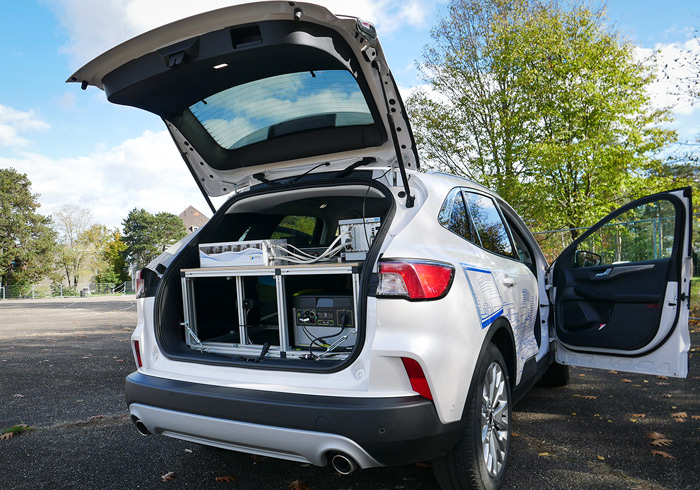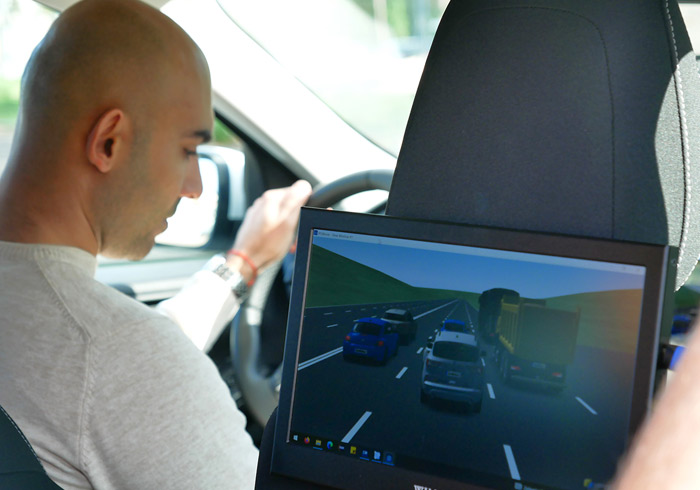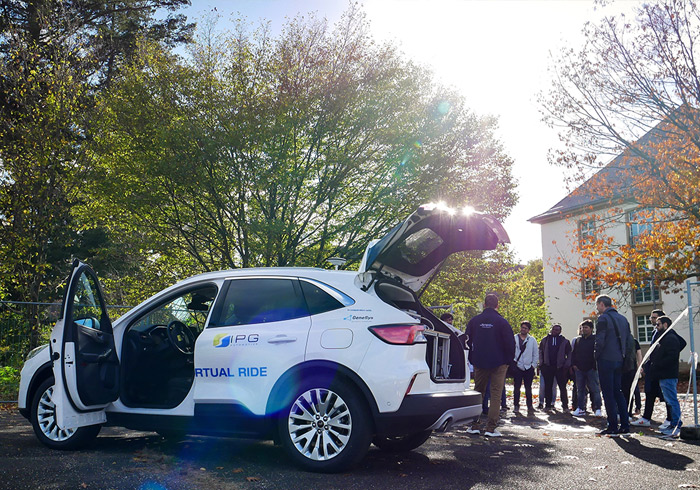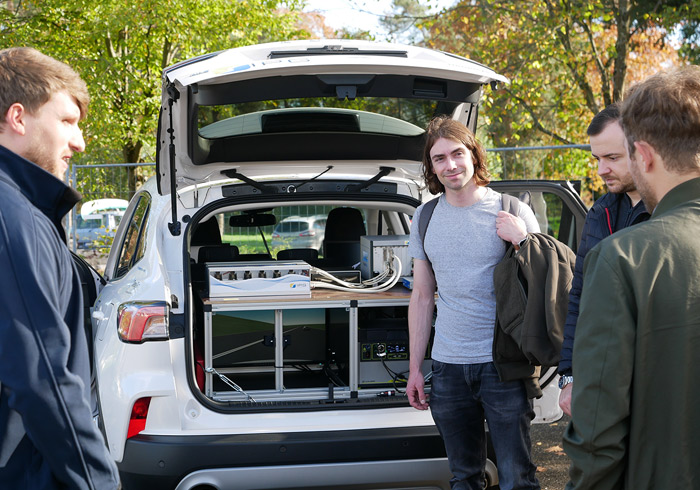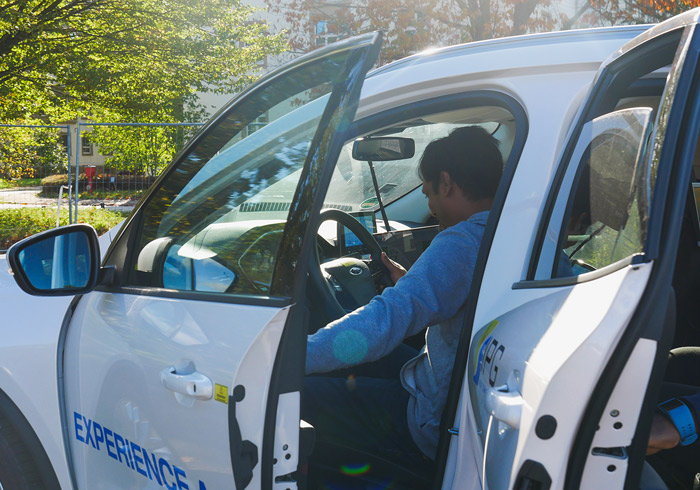Testing Advanced Driver Assistance Systems at the Campus East
What is the Case Study Testing Advanced Driver Assistance Systems about?
Testing advanced driver assistance systems in the complete vehicle under real conditions can be particularly time-consuming and cost-intensive.
In addition to a test site, other components such as dummies must be used to test partially and fully automated driving functions in real conditions.
One way to reduce the effort in terms of testing is the Vehicle-in-the-Loop (VIL) method.
Here, hardware (vehicle, computer, control units) and software (simulation, interfaces, etc.) are linked in such a way that the real prototype with all its sensors reacts to the events from the simulated environment.
Test scenarios can be varied and reproducibly tested while the driver can independently experience the driver assistance function.
What's the Great Thing the Students Learned?
The HECTOR School students were able to experience this novel testing method at the steering wheel of the production vehicle and try out driving functions such as a park assist or adaptive cruise control (ACC).
The advantages of this method with regard to the experienceability and evaluability of the individual driving function and the reduction of effort due to the use of the environment simulation became clear.
In addition, ideas for further areas of application could also be derived in direct exchange with the students
What is Particularly Spectacular?
The connection of the real vehicle with the simulated environment in such a high level of detail, so that the entire sensor system on the vehicle is operated from the information from the simulation, creates a real WOW effect for the participants.
The boundaries between reality and the virtual world seem almost blurred with the VIL test method.
German version
Worum geht es beim Fahrzeugtest?
Das Testen von fortschrittlichen Fahrerassistenzsystem im Gesamtfahrzeug unter realen Bedingungen kann besonders zeit- und kostenintensiv sein.
Neben einem Prüfgelände, müssen weitere Komponenten wie z.B. Dummies eingesetzt werden, um teil- und vollautomatisierte Fahrfunktionen real zu testen.
Ein Weg den Aufwand in Bezug auf das Testen zu reduzieren ist die Vehicle-in-the-Loop (VIL) Methode.
Dabei werden Hardware (Fahrzeug, Computer, Steuergeräte) und Software (Simulation, Schnittstellen, usw.) derart miteinander verknüpft, sodass der reale Prototyp mit all seiner Sensorik auf die Events aus der simulierten Umgebung reagiert.
Testszenarien können variiert und reproduzierbar getestet werden während der Fahrer selbstständig die Erfahrungen mit der Fahrerassistenzfunktion erleben kann.
Was ist das Tolle, das die Studierenden lernen?
Die Studierenden der HECTOR School durften diese neuartige Testmethode am Lenkrad des Serienfahrzeugs erleben und Fahrfunktionen wie einen Park-Assist oder Abstandsregeltempomat (ACC) ausprobieren.
Die Vorteile dieser Methode in Bezug auf die Erlebbarkeit und Bewertbarkeit der einzelnen Fahrfunktion und die Reduktion der Aufwände aufgrund des Einsatzes der Umgebungssimulation wurde deutlich.
Zudem konnten im direkten Austausch mit den Studierenden auch Ideen für weitere Anwendungsbereiche abgeleitet werden.
Was ist daran besonders spektakulär?
Die Verbindung des realen Fahrzeugs mit der simulierten Umgebung in einem derart hohen Detaillierungsgrad, sodass die gesamt Sensorik am Fahrzeug aus den Informationen aus der Simulation bedient wird, erzeugt einen wirklichen WOW-Effekt bei den Teilnehmern.
Die Grenzen zwischen Realität und Virtueller Welt scheinen bei der Testmethode des VIL nahezu verschwimmen.

Unlocking Career Potential in Systems Engineering, E-Mobility or Automated Driving
Find out more

